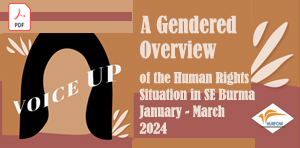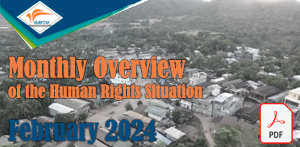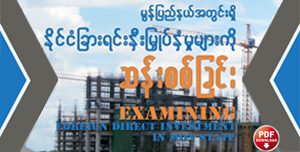MNEC drafts Mon National Education Policy
January 31, 2017
HURFOM: On December 17 and 18, 2016, the Mon National Education Committee (MNEC) organized a public discussion in Lamine City, Ye Township, southern Mon State, regarding education policy. Around 200 participants, including leaders from the New Mon State Party (NMSP), Mon educators, and members from various CBOs and CSOs joined the discussion.
 The main purpose of the discussion was to set an education policy formalizing the Mon language as a major language in the school curriculum when Burma achieves a real federalism. Although, the Myanmar National Education Committee’s policy calls for the instruction of Mon language in mix-controlled schools, it is rarely implemented.
The main purpose of the discussion was to set an education policy formalizing the Mon language as a major language in the school curriculum when Burma achieves a real federalism. Although, the Myanmar National Education Committee’s policy calls for the instruction of Mon language in mix-controlled schools, it is rarely implemented.
“The current education policy [of Burma] also has a policy to use the mother-tongue language as a major one in the curriculum and the other languages as minors. For example, if there is a non-Mon village in Mon State, the curriculum should be written in the language used by the majority of the villagers,” said U Thein Lwin, a member of the National Network for Education Reform (NNER).
The MNEC was founded by the NMSP in 1972 and the committee employs an education system that uses Mon, Burmese, and English languages.
The Mon National Education Policy discussed in Lamine has been drafted by the MNEC and many different varieties of academics and policy-makers from various sectors discussed at length the drafted policy.
The current major challenges for the Mon education system are the budget, primarily funding for teachers’ wages, and the student transfer policy between the schools controlled by the MNEC and ones controlled by the Burma government.
According to a Mon schoolteacher, Mi Karat Non, the MNEC needs 700 million kyat per year as it has to spend 600 million kyat on schoolteachers’ wages. Generally, 80% of the funds are provided the donors and 20% by local Mon civilians.
Providing wages for teachers is the biggest challenge for the MNEC. The MNEC pays fifty thousand kyat per schoolteacher per month and it has to spend 40 million kyat per month for schoolteachers’ wage. However, this amount does not cover all schoolteachers’ wages and the challenges still exist for those teachers not covered by the MNEC.
The participants who joined the discussion advised that in order to get a sustainable funding source, there must be a contribution from wealthy Mon donors, the international donors, Monks, and the Burma government.
The new education policy drafted by the MNEC included points on division of management, curriculum, languages, post-secondary and vocational training, education for migrant children, and budgets.
“Education policy in accordance with federalism is good but it’s impossible [to get a good result in] peace talks. Federalism is very challenging as the civil war is still ongoing. So we have to also consider about our National Education Policy even if [Burma] can’t be a federal country,” said Nai Htaw Mon, the Chairman of the NMSP, in his opening speech on December 16, 2016.
The Mon National Schools have been run by the MNEC since 1972 under the policy of the NMSP and there are 133 Mon National Schools that are totally controlled by the MNEC and 92 mix-school that are controlled by both the MNEC and the Myanmar National Education Committee. There are 780 schoolteachers and 25,573 students – 10,436 are Mon National School students and 14,137 are mix-school students.
Comments
Got something to say?
You must be logged in to post a comment.

















































